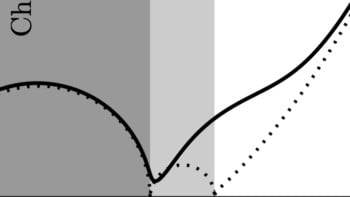
I’m not a machine (as far as I’m aware) but one day AI bots will probably replace at least some aspects of my job as a science journalist. Still, could these computer systems ever really be capable of doing “proper” science journalism? And what is science journalism anyway?
These were some of the questions at the heart of a session on AI journalism at the European Conference of Science Journalism (ECSJ), which took place on 1 September in Trieste, Italy, with most participants joining remotely.
“If we deploy this technology in a way that’s helpful for us, I think it can help science journalism, enrich it and make our jobs easier,” said Mićo Tatalović, news editor of Research Fortnight. Tatalović pointed to several examples where AI has already entered the newsroom and other forms of science communication.
They include (e) Science News, a website that employs an AI editor to curate its news across a range of disciplines. Elsewhere, there’s Science Surveyor, which can provide background information to a field, and SciNote, which can help you write your next scientific paper.
Tatalović spent a year working with computer scientists at Massachusetts Institute of Technology developing an AI bot to automate science news-writing. The group trained a neural network to write jargon-free text by feeding it with news articles from Science Daily along with the corresponding research papers behind the stories. Tatalović believes that the system would become increasingly skilled with additional data.
So could such systems eventually remove the need for science reporters like me?
Not likely, said Harry Collins, a sociologist from Cardiff University, another speaker on the ECSF panel. “There is a carapace of public descriptions of what AI can do, which doesn’t necessarily reflect what AI really can actually do.”
A case in point was the Guardian’s op-ed last week with the somewhat misleading headline “A robot wrote this entire article. Are you scared yet, human?“, which was produced by the GPT-3 language generator. A note following the reasonably well-written piece revealed that editors had cherrypicked and edited the best bits from eight different essays – giving readers an exaggerated view of GPT-3’s capabilities.

Ethos, logos, pathos: the three steps to communicating science
Interested in the sociological dimensions of big-science projects, Collins spent over four decades following the quest to directly detect gravitational waves. He believes the real key to that historic first detection in 2015 was human interaction, underlining that the LIGO-Virgo collaboration had previously rejected several apparent detections. “The real art of science is working out what’s good data and what’s rubbish,” he said.
Collins argued that if AI is of limited use in breakthrough science, then by extension the same is true for science journalism. “Serious journalism is where people are trying to get themselves to the frontier of science and develop a real serious understanding of science,” he said.
You can see the full discussion in this video, also featuring Fabiana Zollo from Ca’ Foscari University of Venice and Charlie Beckett of the London School of Economics.


